I Tested the New Garmin Venu X1 for Two Months – and Wow, It Outshines Its Predecessors in Wearability and Functionality
Style and substance? We're sold.
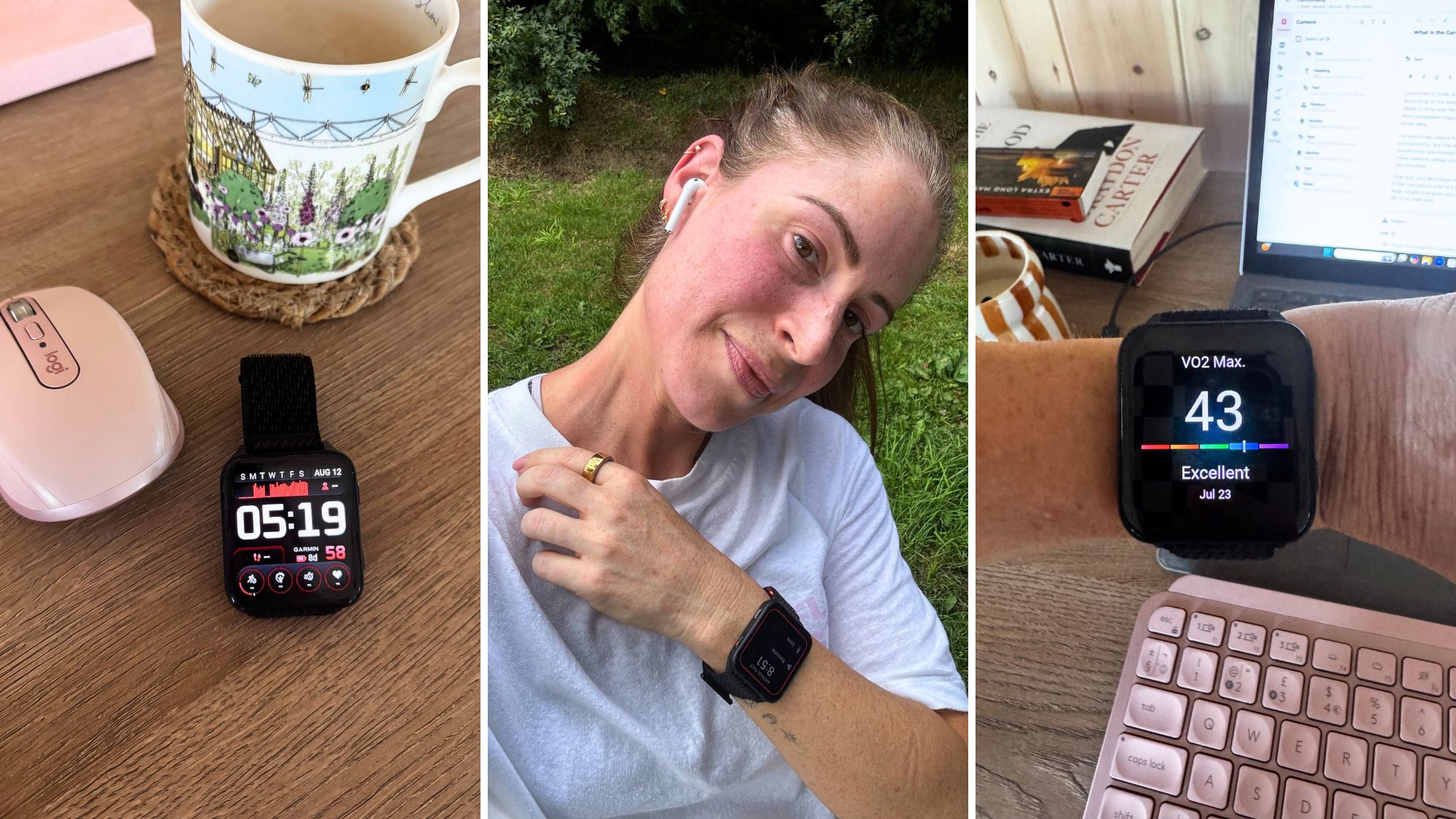
-
+
Lightweight
-
+
Comfortable
-
+
Long battery life
-
-
Can be tricky to navigate
-
-
Date and time can be inaccurate
-
-
It's expensive

If you're in the market for a smart-watch-fitness-tracker combo, the chances are you'll have come across Garmin. Runners and fitness enthusiasts alike have been sporting various iterations of their fitness trackers for decades, and they're known for producing sturdy (if a little clunky) tech that serves its purpose relatively nicely.
But with the advent of their newest model, the Venu X1, Garmin have upped the ante on their offering - presumably in an attempt to compete with the (whisper it) Apples of the smart tech space.
And compete it does: at almost £700 per watch, it's a significant investment for which you and I (quite rightly) expect a lot, and on the surface, it would seem the Venu X1 delivers. It's got all the usual GPS and tracking data you'd expect, alongside more innovative functions such as nap detection (er, guilty) and breathing timers.
In truth, I've never really got on with my smart watches, preferring instead my Oura ring. So, when I was offered the opportunity to trial the model for two months, I was keen. Would the Venu X1 change my mind and transform me into a hardcore tracking fan? Keep scrolling to find out, but in the meantime, you might be interested in our guides to the best fitness trackers and the best FitBits, too.
What is the Garmin Venu X1?
Launched in June 2025, the Venu X1 is, quite literally, hot off the press. According to the brand, its USPs are that it's exceptionally lightweight (I can attest to this) and the ultra-large display, alongside the features you'd expect from preloaded maps and workout stats to health insights, including sleep and stress data.
I've previously used a ForeRunner (only while running, never on my wrist permanently), but the Venu X1 bears little resemblance to its older sibling. The ForeRunner was limited in terms of functions, but the Venu X1 has almost too many options, unless you're super into your stats (I didn't use half of them in two months!)
That said, you don't have to get to grips with everything the device has to offer if (like me) you're a bit of a technophobe. The two-inch AMOLED display is large, bright and gives you all the basics at a glance: steps, remaining battery life, time, date, heart rate and more. So, if you wanted to simply rely on that, you could - although, if so, you're probably better off saving a few hundred pounds!
Celebrity news, beauty, fashion advice, and fascinating features, delivered straight to your inbox!
Like many other high-tech wearables, the data you get out is only as good as the data you put in, so wearing the watch all day, every day, is pretty much a non-negotiable. Fortunately, it's super comfortable, and I'm amazed by how light and thin it is compared to its predecessors - especially given the impressive range of functions.
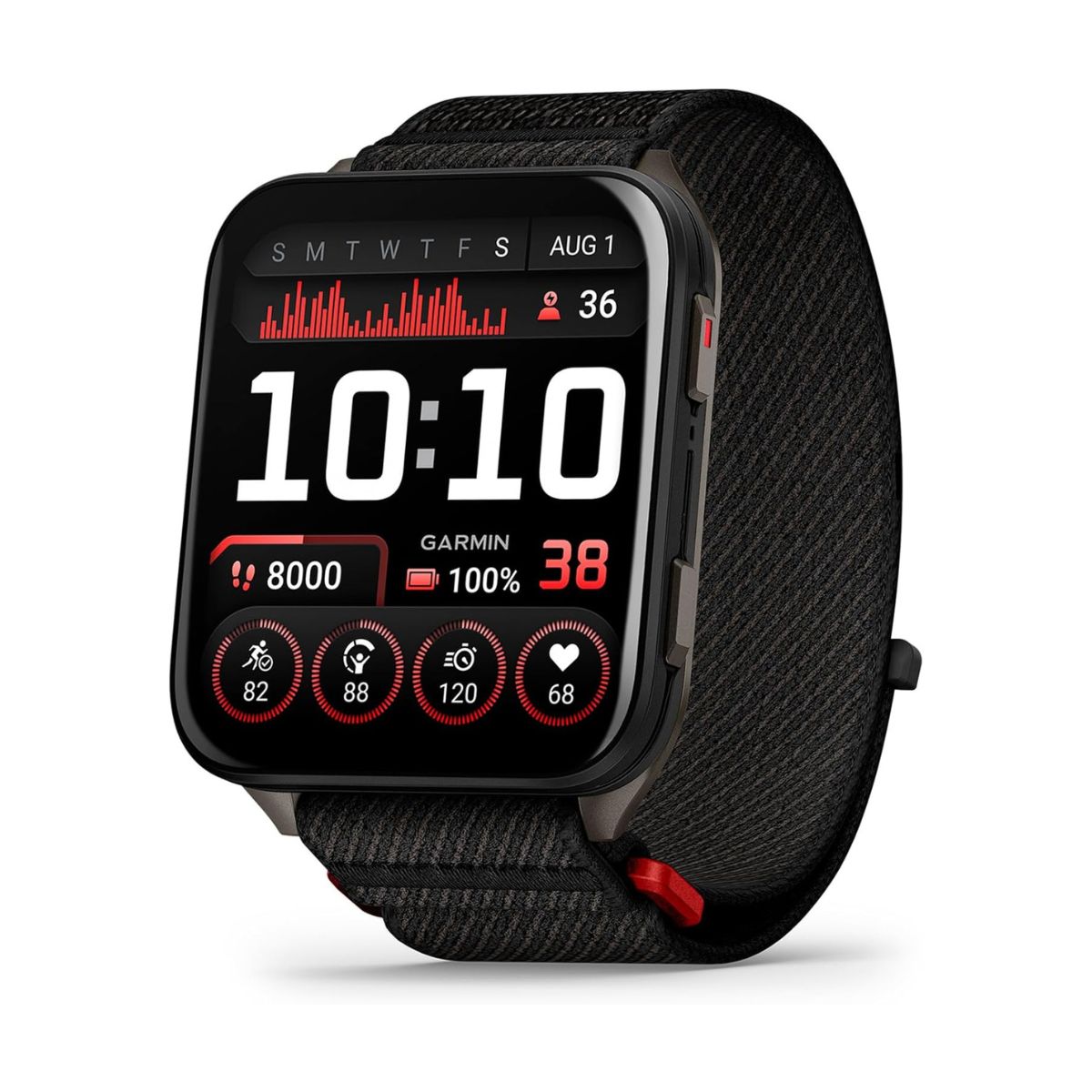
Specifications:
- Built-in flashlight
- LED speaker
- Android and Apple compatible (you can make and receive calls and send texts)
- Comfortable nylon strap and titanium caseback
- Water-resistant to 5 ATM
- Touchscreen
- GPS mapping
- 8-day charge
- Sleep score insights
- Training status insights
What I liked about the Garmin Venu X1
There is a lot to like about this watch, as you'd hope given the high price point. First and foremost, its sleek design sets it apart from my previous running watches, and it is light-years ahead of the clunky, plastic ForeRunner I previously owned.
It's also (I'm calling it) the most comfortable watch I've ever owned. I personally love the nylon strap with velcro fastening - no more choosing between fastening holes that are either too loose or too tight, never just right. And even during my sweatiest of days (summer '25 heatwave, I'm talking to you), the strap didn't rub or chafe at all. In fact, I forgot I was wearing it most of the time, which is a huge advantage, as to get accurate sleep and workout data, you'll need to wear it constantly. I'm someone who generally hates wearing any kind of jewellery while sleeping, finding that I get overstimulated and irritated by it, but this wasn't the case with the Venu X1.
Practically speaking, it ticks a lot of boxes, too. You can listen to music via the built-in speaker, as well as pay for your post-run matcha, all while making and receiving calls and texts, should you wish. And I have to commend the battery life: while I've read some users note it's not great, I found that it lasted well, and certainly lived up to its touted eight day life - however, you have to make sure that the display isn't in always 'on' mode, as this will drain the battery.
Aesthetics and practicalities aside, though, what I was most interested in was how the device fared when tracking activity and interpreting my stats, particularly as I'm addicted to my Oura ring and its insights.
The good news is that it tracks my runs and other workouts efficiently for the most part - although it isn't as intuitive as the Oura, and it sometimes didn't register a workout that I'd done, which was frustrating. However, it churns out some interesting data, and as it gets to know me and my lifestyle, I'm pleased to note that it's giving me decent feedback on my fitness via V02 max scores, resting heart rate, fitness age and - my favourite function - the 'body battery', which tells you how much energy and resilience you have at any given point, and allows you to tailor your activity accordingly.
In terms of what I've learned about myself and my overall wellbeing, I have to admit that there's been no big surprises (but that's probably a good thing!), most likely because I'm already tracking the same information, albeit in a different way. So, if this were your first foray into wellness tracking, you're likely to gain a lot more from the experience than I did.
All that being said, it's interesting for me to compare my devices and see how the data stacks up: when my Oura ring tells me I'm at peak resilience, the Garmin agrees, but there is a little variation in my sleep and stress data, with my ring picking up more periods of stress than the watch. However, this is only because I'm directly comparing the two, and (for the most part) they're broadly aligned.
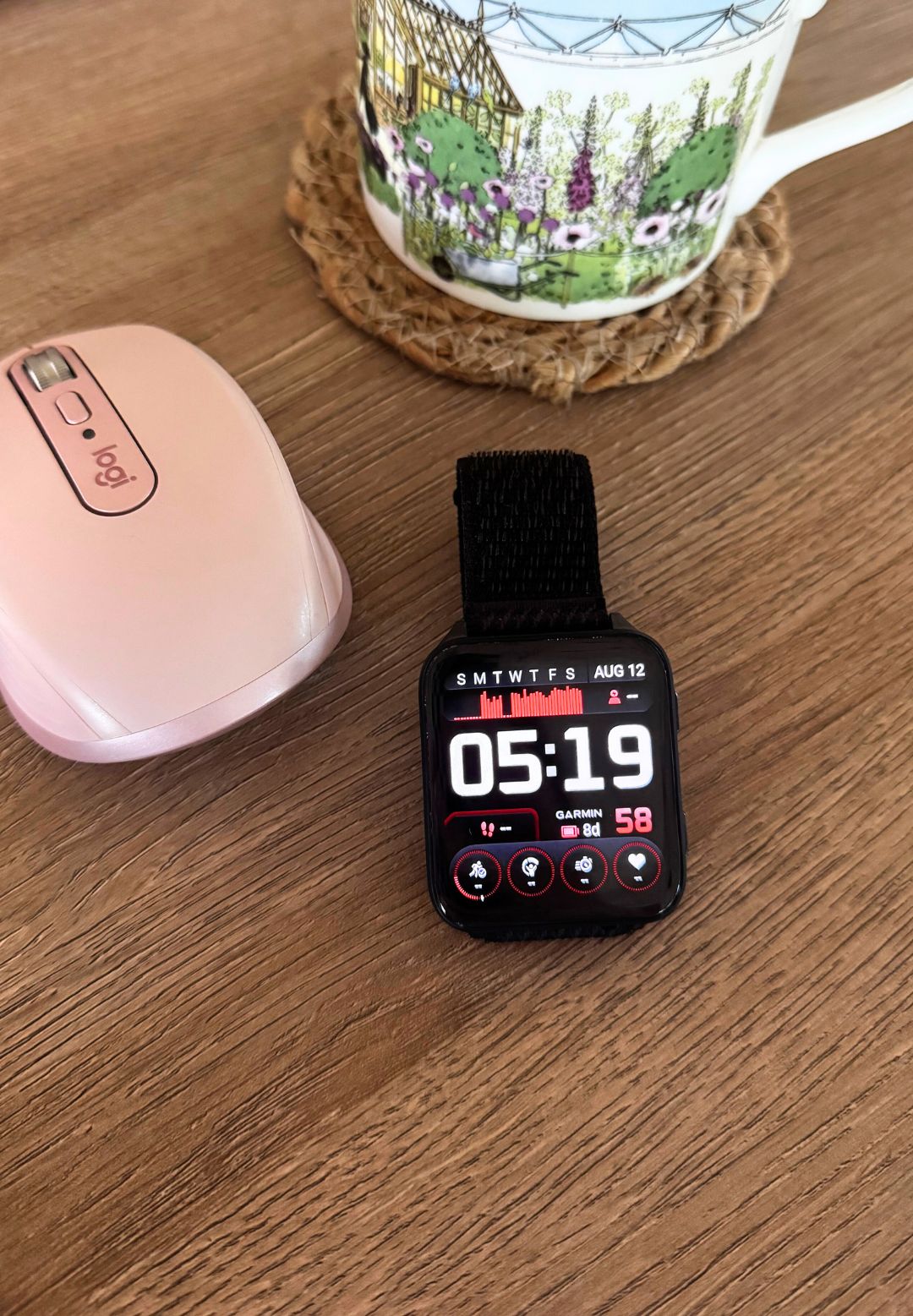
A close up of the Garmin Venu X1 fitness tracker and smart watch on Health Writer Anna Bartter's desk while she was testing for this review article
What's not so good about the Garmin Venu X1?
Full disclosure here: I'm really not great with technology, and I did find the touchscreen-button hybrid a little confusing, at times. Also, if you don't sync the device with the Garmin Connect app regularly, some functionality drop off is noticeable (at one point, the date and time were totally wrong, and I was a t a loss with how to change them until I recalibrated via the app).
While the option to build a workout via Garmin Connect is handy, it's not as intuitive as I'd have liked. Sure, this might be down to user error rather than an issue with the device itself, but it was a touch clunky IMO.
As mentioned above, even though I've worn the watch constantly, it has missed a few workouts, and I'm still not quite sure why: I think I'll need to do a deep dive into the instructions to work it out. Call me old-fashioned, but I'd have loved an instruction booklet to come with it, too.
Is the Garmin Venu X1 worth the money?
There's no getting away from the fact that the Garmin Venu X1 is a pricey little piece of kit. If you're up for the investment, however, it does offer an excellent alternative to the Apple Watch in terms of functionality and wearability. Full disclosure: I've never actually owned an Apple Watch, but a cursory glance suggests that the two devices are pretty similar, so if it's a choice between the two, it'll largely come down to personal preference.
That said, if you're comparing the device against Garmin's previous offerings, the Venu X1 is a step up. However, I found it clunky to navigate, and it had a tendency to reset itself to the wrong time and date, which was frustrating. Overall, though, I loved how light it was, and the large display is a plus, too.
Would I buy one? Honestly, I'm devoted to my Oura ring, and I love not having my stats at my fingertips, so for me, it's a no. That said, I will continue to use the Venu X1 for tracking my workouts alongside my Oura ring, in much the same way as I used my old ForeRunner. I know this will affect the stats, but I'm ok with that.
My main takeaway is that this is an excellent fitness watch, should you want to spend the money. To get the most bang for your (considerable) buck, I'd recommend using it as more than simply a running tracker.
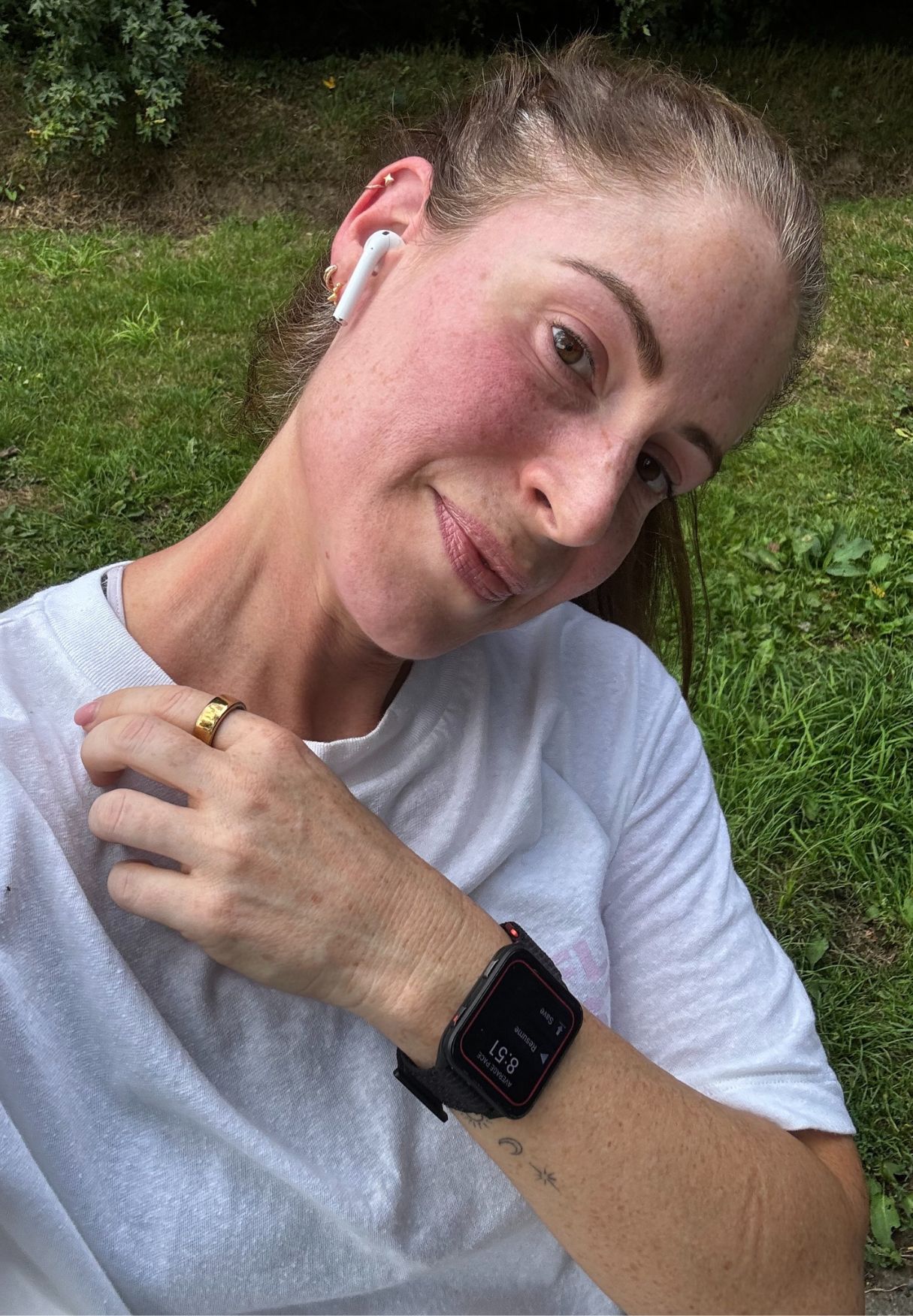
Anna on a 5km run, testing her Garmin Venu X1
Our Editors' favourite fitness trackers

As you can tell from Anna's review, she's a big fan of the shiny new Garmin Venu X1 design. With handy extra features, like a built-in flashlight and LED speaker, GPS mapping, touchscreen capacities, training status insights, and a wildly impressive eight-day charge promise, this is one for athletes and fitness fanatics alike.
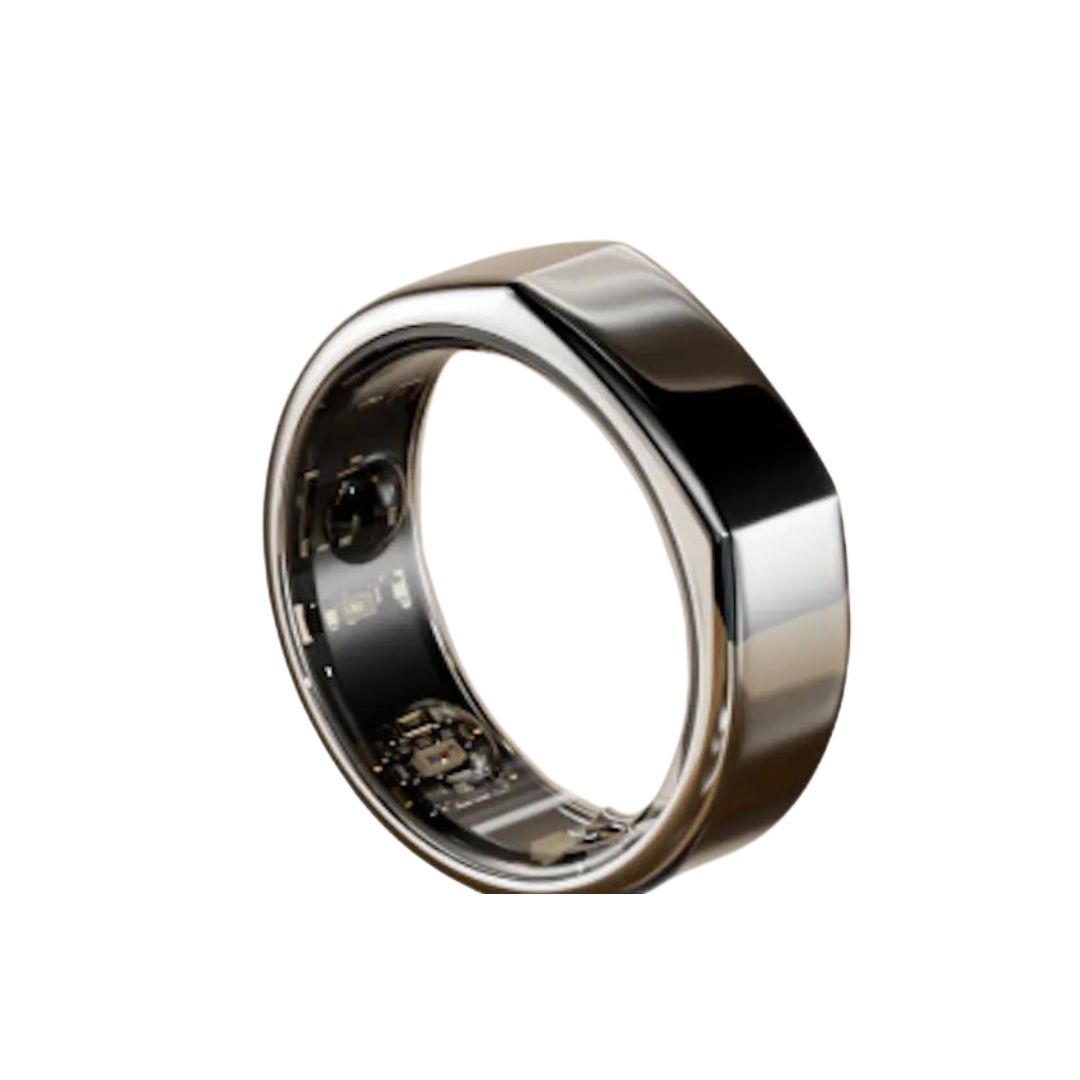
Every celebrity and influencer under the sun seems to have an Oura ring - and for good reason. The snazzy, subtle bits of kit are great for tracking your data without wearing a chunky watch or device.
What we thought when testing? "It’s the perfect way to keep track of your health without it being massively intrusive. I particularly enjoyed the sleep scoring and "Readiness" factor (a score that shows you how you might be able to handle the day ahead) and concise weekly reporting. There’s also the option to explore breathwork and guided meditations via the app on your phone.
I have a smartwatch (the Apple Watch SE) that measures my heart activity and sleep too, so it was interesting to see whether the data would match up. I compared the data from my watch (via the Welltory app synced to my phone) and the Oura ring, and for the most part, they gave very similar readings." - Sunil Makan, Editor
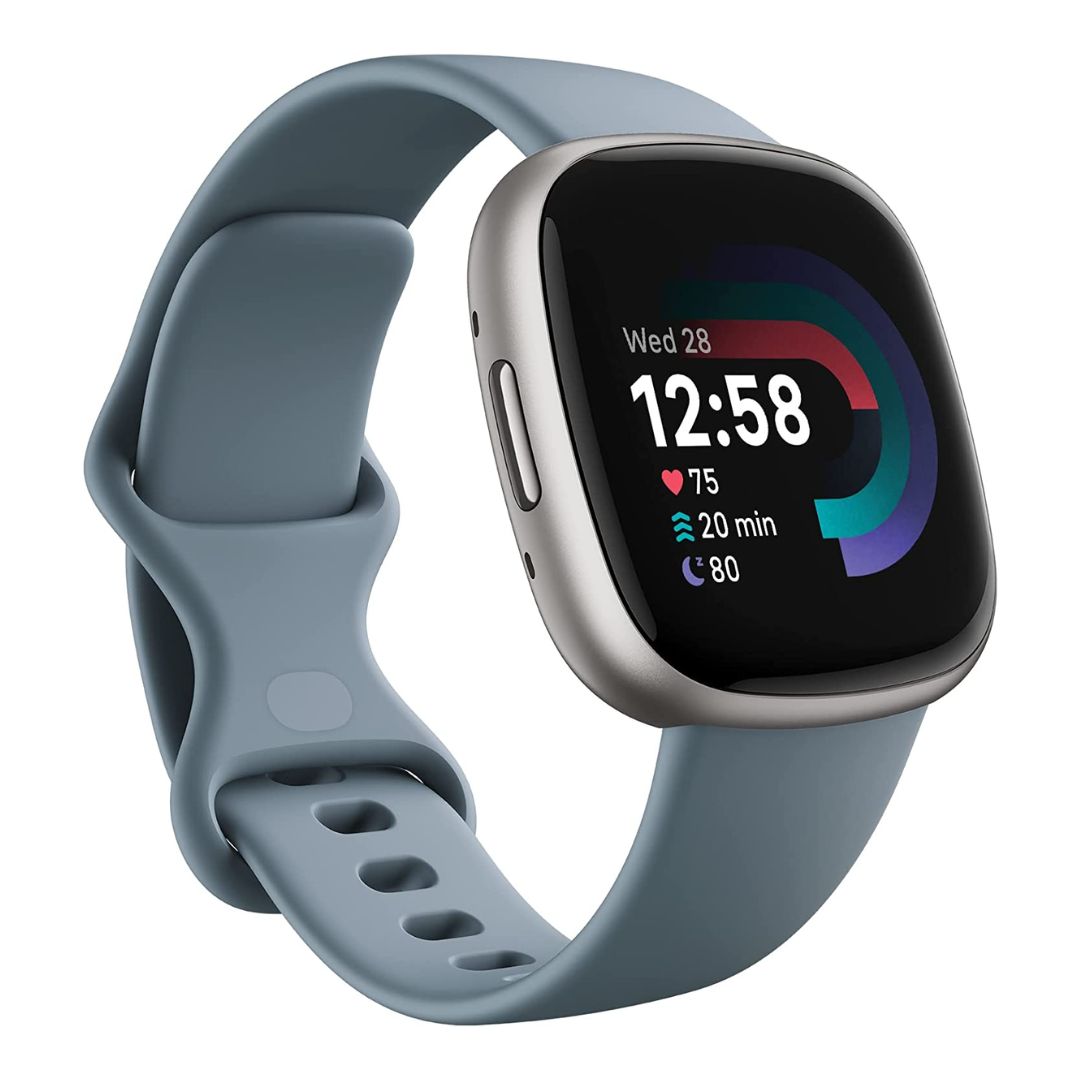
Fitbits are well-loved globally for reliable and easy-to-navigate fitness tracking. While they're more suited to beginner levels of fitness or those simply looking to track their step count, they're affordable and reliable.
What we thought when testing: "The Fitbit Versa 4 has been dubbed the most advanced smartwatch from the brand, so as a Health Editor, I was eager to test it out. I trialled my first Fitbit back in 2015 and trained for my first-ever marathon using one. While they’re certainly great at pulling health stats, they weren’t so great on accurate stats and battery life back in the day - which is why I was pleasantly surprised to find that the Versa 4’s stats were similar enough to my much-loved Garmin Forerunner, and the battery life lasted around four to five days.
It looks great, accurately records your health stats, and lasts nearly a week. I'd buy if you exercise a few times a week and love tracking your workout classes and steps." - Ally Head, Senior Health Editor

Last but by no means least, the screenless WHOOP is a firm favourite among coaches and athletes for its detailed and thorough tracking without the need for a constantly on screen. Rather, the data is all collected on the app on your mobile phone.
What we thought when testing: "WHOOP have long been hailed as the fitness tracker of all fitness trackers, with celebrities and athletes alike swearing by their stats (we’re looking at you, Tom Daley). But it’s slightly different to other competitors. How? Well, it continuously collects data about everything from your recovery to training, to sleep, to stress, versus other wearables that collect data during workouts and shut-eye.
You have to wear it for a few weeks before it starts feeding back your data, but I've never had more insight into my overall fitness levels, recovery score, and so on, and it was very accurate when cross-referenced with my Garmin."

Anna Bartter is a freelance journalist who writes about health, fitness and women's lifestyle for publications including Stylist, Metro and Psychologies, among others.
She's always on a quest to find a variety of fun and functional workouts that give you the most bang for your workout buck and she's passionate about championing movement for everyone's mental and physical wellbeing.